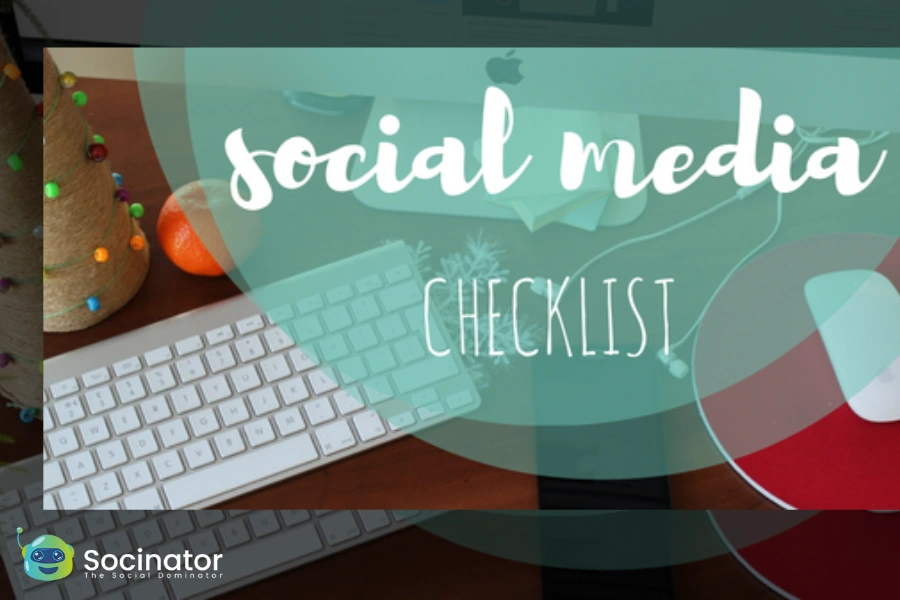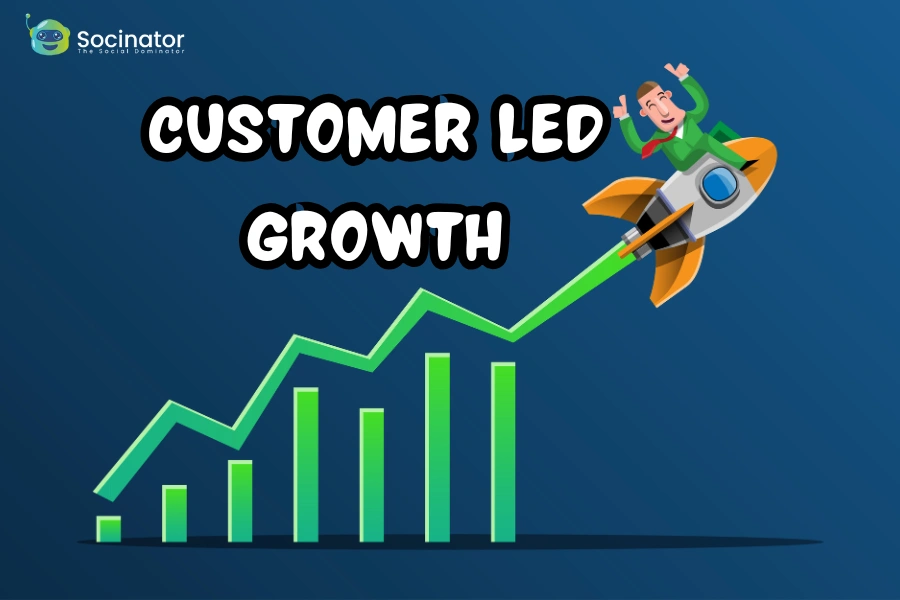These days, just posting whenever you feel like it on social media doesn’t cut it. You need a simple, reliable plan to grow your presence and keep your audience engaged. That’s where a social media checklist can help. If you’re running a business or managing a bunch of social media accounts, a checklist can take a lot off your plate. It keeps things organized, helps your team stay in sync, and ensures nothing important slips through the cracks.
In this blog, we’ll break down what a social media checklist includes, why it’s important, and how it can help you stay consistent, save time, and get better results from your efforts.
Hit ‘Play’ Button & Tune Into The Blog!
What Is Social Media Checklist?
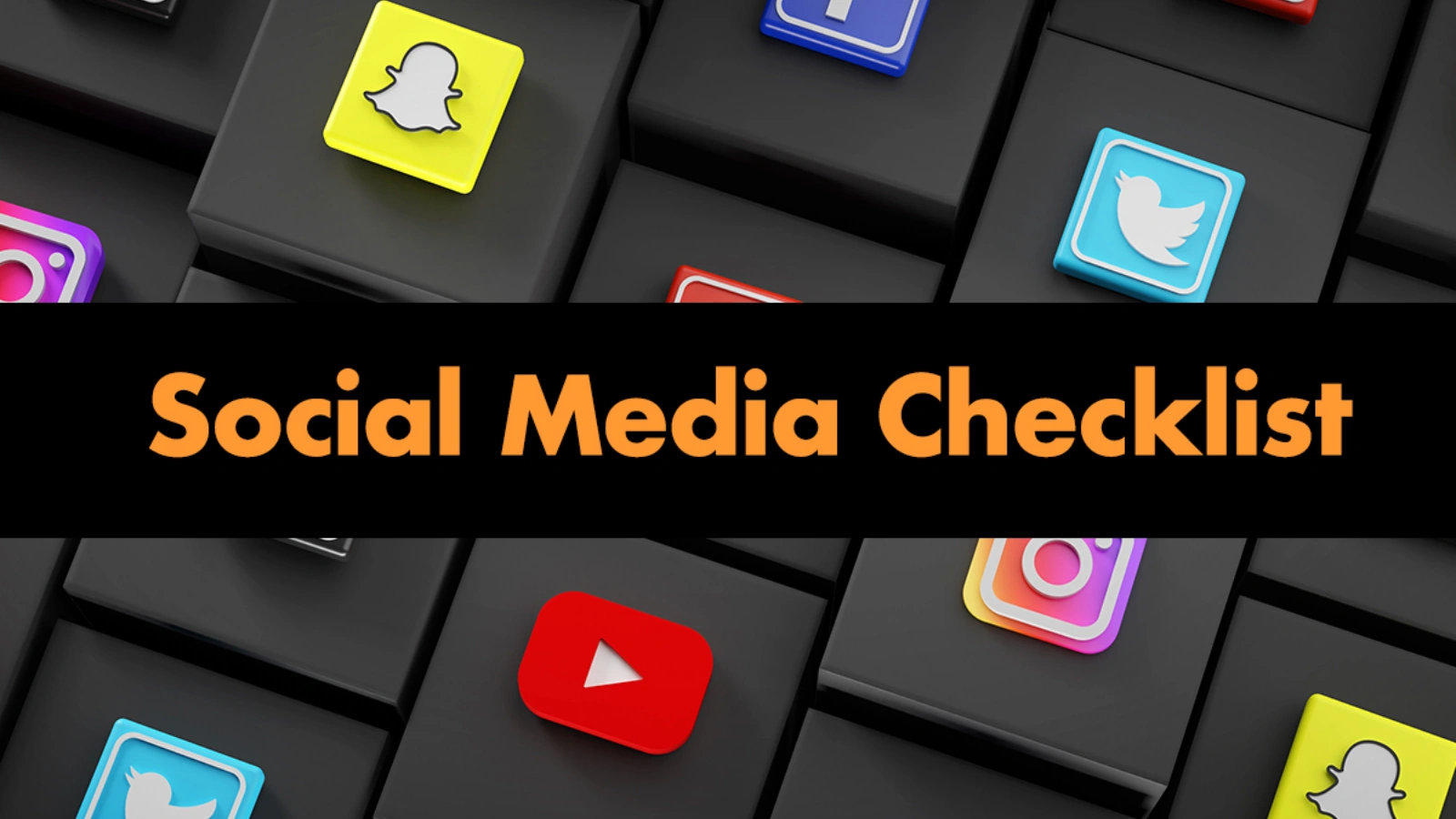 A social media checklist is a structured tool that helps streamline your daily tasks on social platforms. It provides a clear framework for planning, posting, and monitoring content. This ensures your efforts stay organized and aligned with your marketing goals.
A social media checklist is a structured tool that helps streamline your daily tasks on social platforms. It provides a clear framework for planning, posting, and monitoring content. This ensures your efforts stay organized and aligned with your marketing goals.
Instead of making random decisions, a checklist gives direction to every step of your process. It includes actions like content creation, scheduling, engagement, and analytics review. This makes managing multiple accounts easier and more consistent.
An effective checklist also ensures brand consistency, reduces mistakes, and saves time. It acts as a repeatable system that improves productivity and performance. In short, it transforms chaos into a clear, focused social media strategy.
Why You Need A Social Media Checklist?
 Managing social media today involves more than just posting updates; you’re expected to track trends, analyze performance, run ad campaigns, and engage with your audience regularly. A social media checklist brings structure, focus, and consistency to that entire process.
Managing social media today involves more than just posting updates; you’re expected to track trends, analyze performance, run ad campaigns, and engage with your audience regularly. A social media checklist brings structure, focus, and consistency to that entire process.
Here’s why it’s essential:
Consistency in branding and messaging:
When you manage multiple platforms, it’s easy for your voice and visuals to drift. A checklist keeps your tone, brand colors, message, and values uniform across all posts. This builds stronger recognition and trust among your audience, a critical aspect of successful social media marketing.
Efficiency through organized workflows:
A social media checklist maps out your daily, weekly, and monthly tasks in a clear sequence. This reduces guesswork, minimizes errors, and keeps your team aligned. It also helps you execute faster without losing quality.
Improved performance tracking:
Including analytics review in your checklist ensures that data isn’t overlooked. By regularly tracking engagement, reach, and conversion metrics, you can learn what works and optimize future campaigns with greater confidence.
Better content planning:
A solid checklist ensures that content is brainstormed, created, reviewed, and scheduled in advance. This leads to a well-balanced mix of promotional, educational, and interactive posts that resonate with your audience.
Time savings through automation:
By incorporating tools for scheduling, reporting, and monitoring, your checklist helps automate repetitive tasks. This frees up valuable time so you can focus on strategy, creativity, and building deeper engagement.
Most importantly, using a checklist keeps you proactive rather than reactive. Instead of rushing to fix gaps or come up with last-minute ideas, you stay ahead with a clear roadmap, which leads to better results and less stress.
Also Read:
11 Social Media Marketing Ideas for Non-Profit Charity Organization
Types Of Social Media Checklists
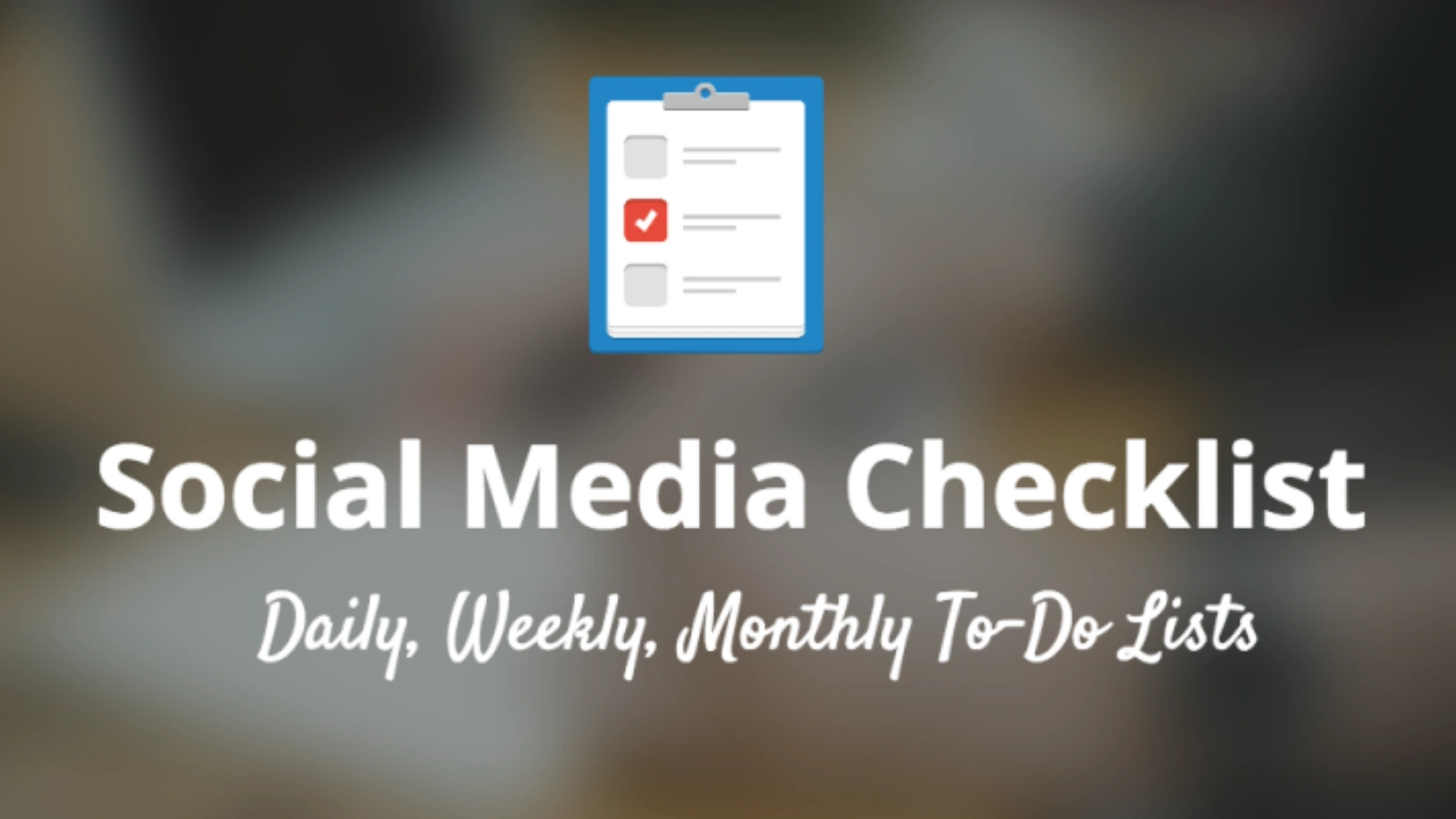 When managing your online presence, it helps to break your routine into daily, weekly, monthly, and long-term checklists. These are the main types of social media checklists, each focused on a specific timeframe and objective.
When managing your online presence, it helps to break your routine into daily, weekly, monthly, and long-term checklists. These are the main types of social media checklists, each focused on a specific timeframe and objective.
1. Daily Social Media Checklist:
Staying active on social media doesn’t require hours of effort, just consistency and focus. Use this daily checklist to maintain a fresh and engaging presence:
Check notifications and respond to comments:
Replying to comments, DMs, and mentions helps build trust and encourages more interaction. It shows your audience that you’re listening and care about their input.
Engage with 3–5 accounts in your niche:
Spend a few minutes liking, commenting on, or sharing posts from others in your industry. This not only increases your visibility but also fosters valuable relationships in your community.
Review and repost user-generated content (UGC):
Keep an eye out for content your followers have tagged you in or shared about your brand. Reposting UGC adds authenticity, builds credibility, and makes your audience feel appreciated.
Schedule or publish new content:
Make sure at least one piece of fresh content goes out daily, whether it’s a story, post, or video. Scheduling tools can save time and help maintain consistency across platforms.
Monitor trending hashtags and news:
As part of your social media checklist, keep an eye on trending topics and hashtags across platforms to spot timely content opportunities. Aligning your posts with relevant trends can significantly increase visibility, spark engagement, and keep your brand part of the conversation.
Track basic performance metrics:
Take a quick look at how your latest posts are performing. Monitoring reach, likes, shares, or comments helps you spot patterns and make better decisions moving forward.
When done consistently, these small daily tasks can create a big impact over time, strengthening your presence and keeping your audience engaged.
2. Weekly Social Media Checklist:
Your weekly checklist helps you balance strategy and execution while staying ahead of the curve. It’s the ideal time to evaluate what’s working and prepare for the days ahead.
Review analytics for best-performing posts:
Dive into the data to see which posts got the most engagement, reach, or conversions. Understanding what resonates helps you fine-tune your content strategy.
Plan and draft content for the next week:
Sketch out post ideas, create visuals, and write captions. Getting ahead ensures you’re not scrambling to post last minute.
Brainstorm new content ideas:
Explore fresh formats, topics, or campaign angles to keep your feed engaging. Look at trends, customer questions, or brand updates for inspiration.
Check competitor profiles:
As part of your social media checklist, take a peek at what others in your niche are posting. This helps you identify content gaps, discover fresh approaches, and uncover opportunities to differentiate your brand and stay ahead.
Audit bio and link accuracy:
Make sure your profile information, links, and contact details are up to date across all platforms. A small detail, but it reflects professionalism.
Explore collaborations or influencer partnerships:
Identify potential creators or brands to partner with. Weekly outreach keeps your brand growing through cross-promotion.
A thoughtful weekly routine helps you stay proactive with content and keep your strategy aligned with your goals.
3. Monthly Social Media Checklist:
Zooming out once a month gives you the clarity to spot patterns, evaluate performance, and course-correct if needed. It’s all about strategic adjustments.
Conduct a mini content audit:
Use a structured social media audit checklist to review which types of posts performed well and which didn’t. This helps you identify what content needs improvement, what’s resonating, and how to refine your tone, formats, or posting schedule more effectively.
Measure KPIs and set new goals:
Track key performance indicators like follower growth, engagement rate, clicks, and conversions. Use these to set realistic goals for the upcoming month.
Update your content calendar:
Use your social media checklist to add upcoming campaigns, seasonal events, or launches to your schedule. This keeps your planning organized and ensures your content stays aligned with your overall marketing timeline.
Evaluate ad performance:
If you’re running paid campaigns, assess their results. Adjust targeting, creatives, or budgets based on what drove the best ROI.
Back up high-performing content:
Save or archive posts that did exceptionally well. These can be reused, repurposed, or serve as templates for future content.
Reassess hashtags and CTAs:
Test new hashtags or calls to action if your current ones feel stale or underperforming. Staying fresh can improve post-reach and interaction.
Taking time for a monthly review helps you make smarter decisions and maintain a consistent, data-driven strategy.
4. Quarterly and Annual Social Media Checklist:
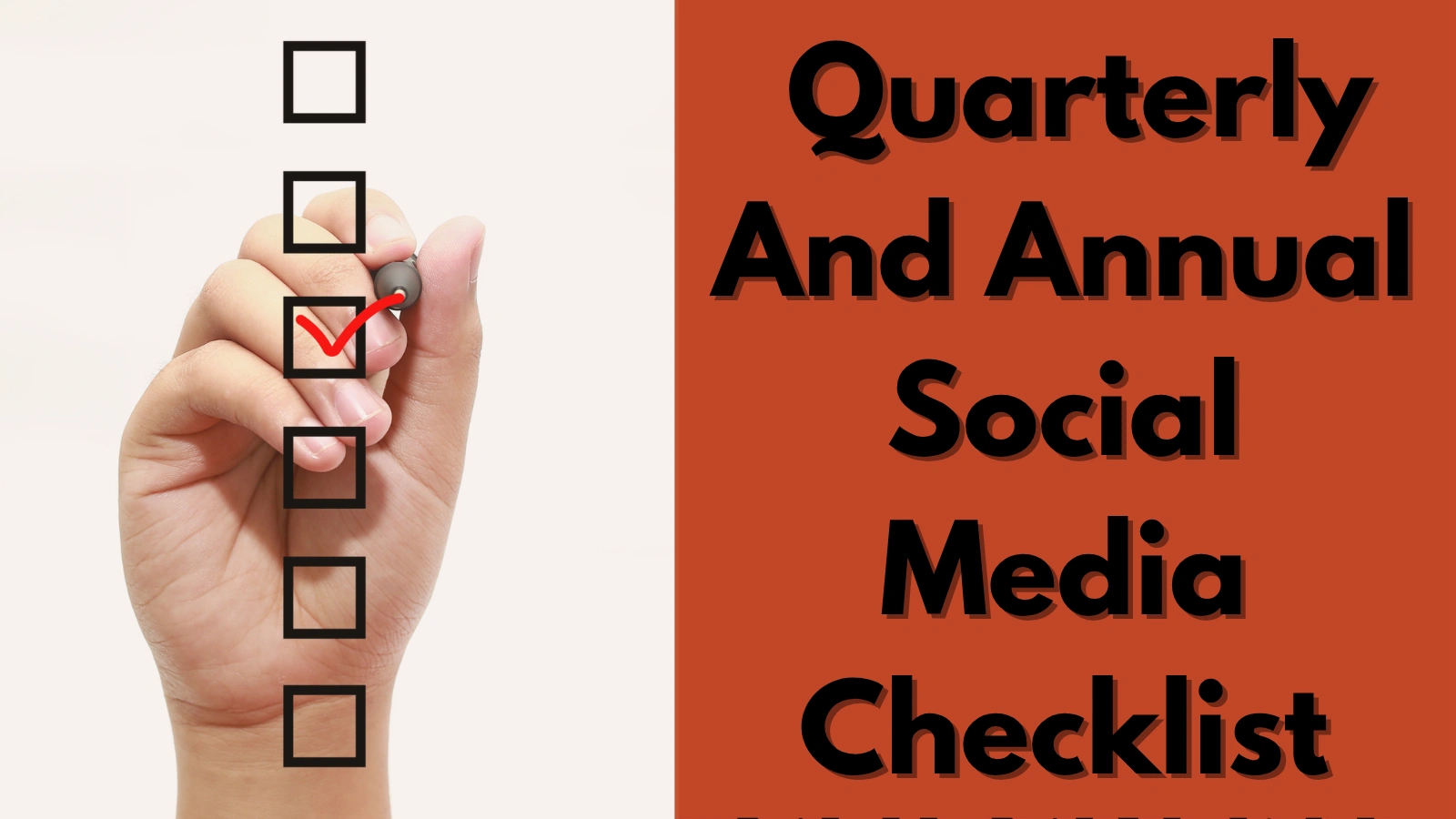 Long-term success comes from planning and big-picture thinking. This checklist is designed for deep reflection and strategic pivots.
Long-term success comes from planning and big-picture thinking. This checklist is designed for deep reflection and strategic pivots.
Conduct full platform audits:
Evaluate all social accounts for branding consistency, content quality, and user experience. Address outdated visuals, broken links, or inactive platforms.
Review audience demographics:
Analyze who’s engaging with your content. Are you reaching the right age group, region, or interest segment? This insight shapes future targeting.
Update branding or voice guidelines:
Adjust your brand voice, visuals, or messaging if needed. Ensure all platforms reflect your current identity and values.
Evaluate overall strategy:
Step back and review your big-picture goals. What’s working? What’s not? Decide what to double down on or phase out.
Set quarterly OKRs (Objectives & Key Results):
Define clear objectives for growth, engagement, or conversions. Break them into measurable key results to track progress throughout the quarter.
Review compliance and legal requirements:
Use a social media compliance checklist to ensure all your campaigns, ads, and content meet current regulations, platform policies, and legal standards. This prevents potential issues and keeps your brand reputation intact.
Quarterly and annual check-ins ensure your brand evolves with purpose and stays aligned with both internal goals and external trends.
Also Read:
What Are Specialized Social Media Checklists And Why Do You Need Them?
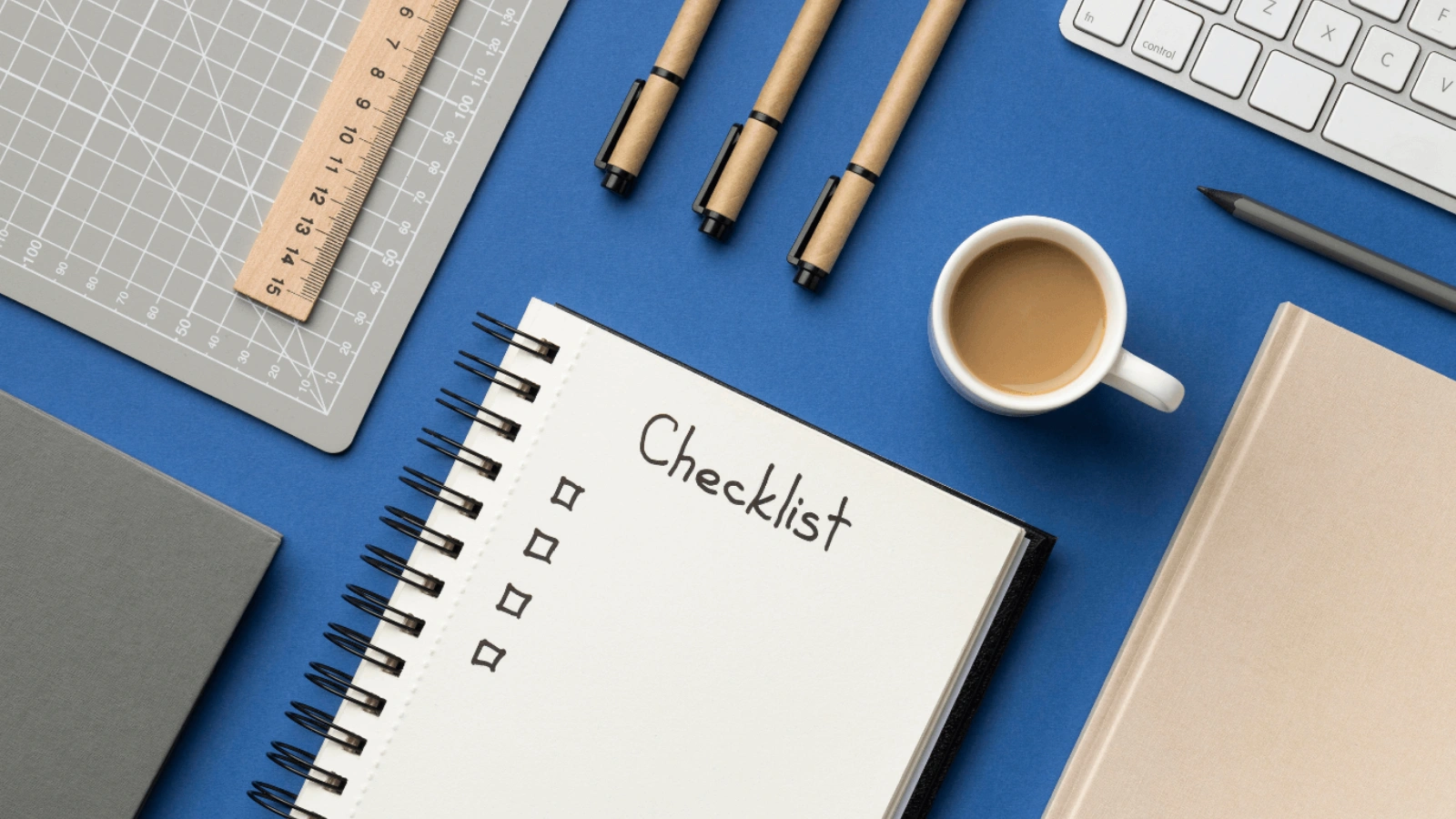 Not every social media checklist needs to follow a strict daily, weekly, or monthly format. Specialized checklists focus on specific actions or strategies, such as optimizing a single post before publishing or managing an entire campaign. These checklists help maintain professionalism and consistency, regardless of the platform or posting frequency, ensuring every move supports your overall goals.
Not every social media checklist needs to follow a strict daily, weekly, or monthly format. Specialized checklists focus on specific actions or strategies, such as optimizing a single post before publishing or managing an entire campaign. These checklists help maintain professionalism and consistency, regardless of the platform or posting frequency, ensuring every move supports your overall goals.
Social Media Posting Checklist
Before you publish any social media post, make sure it’s visually strong and aligned with your brand style. A crisp, high-quality image or video instantly builds credibility and attracts attention. Pair this with a caption that’s not just informative, but encourages action, like prompting a comment, share, or click.
Make sure you’re posting at the right time when your audience is most active. Consistent tone across posts helps reinforce your brand’s personality, while thoughtful use of hashtags and tagging relevant people or partners can expand your reach without feeling forced or spammy.
Taking a few extra moments to follow this checklist helps every post feel intentional and professional, boosting engagement and leaving a lasting impression on your audience.
Social Media Marketing Checklist
A well-structured social media campaign begins with setting clear goals, whether it’s building awareness, generating leads, or driving conversions. Defining these objectives helps shape everything that follows. From there, understanding your audience is key. Creating detailed personas based on interests, demographics, and online behavior allows you to craft content that speaks directly to them.
Choosing the right platforms is just as important. Each channel serves different purposes, so focus your efforts on where your target audience is most active and engaged. Your social media checklist should also guide you in creating compelling visuals and well-written captions that are not only attention-grabbing but also consistent with your brand’s message and tone.
Next, plan and schedule your campaign content to maintain momentum and stay organized throughout the promotion. Tools like Socinator, a powerful social media automation tool, can streamline this process by helping you automate posts across platforms. Equally vital is setting up performance tracking tools in advance to monitor real-time metrics such as engagement, reach, and click-through rates.
Finally, once your campaign is live, or even midway, evaluate its performance and make necessary adjustments. Learning from what worked and what didn’t allows you to fine-tune your future strategies, making each campaign more effective than the last.
How Can Socinator Make Your Social Media Checklist Even More Powerful?
 If managing daily posts, tracking analytics, and running campaigns feels overwhelming, Socinator is the all-in-one social media management software designed to simplify your entire workflow. Whether you’re following a daily checklist or executing long-term strategies, Socinator helps automate the routine while keeping your brand consistent and effective.
If managing daily posts, tracking analytics, and running campaigns feels overwhelming, Socinator is the all-in-one social media management software designed to simplify your entire workflow. Whether you’re following a daily checklist or executing long-term strategies, Socinator helps automate the routine while keeping your brand consistent and effective.
Here’s what Socinator brings to your checklist-driven strategy:
Access to 9+ social platforms: Manage multiple accounts like Facebook, Instagram, LinkedIn, and more, all from one place.
Advanced post scheduling: Plan and publish your content ahead of time with a visual calendar that keeps your posting on track.
Content management & automation: Save time by automating repetitive tasks while still maintaining quality and timing precision.
Audience targeting tools: Reach the right users with smart automation features that help grow real engagement.
Analytics & performance tracking: Easily monitor KPIs like engagement, reach, and conversions to refine your strategy.
Social listening & security: Stay on top of conversations and trends while keeping all your accounts safe.
With Socinator, your social media checklist becomes more than just a to-do list; it transforms into a fully integrated, social media automation tool that delivers consistent, measurable results across every channel.
Conclusion
A well-structured social media checklist is your secret weapon for staying consistent, saving time, and driving better engagement in 2025. From daily tasks to campaign execution, it keeps your strategy focused and efficient. With smart tools like Socinator, you can streamline your workflow even further, automating posts, tracking performance, and managing multiple platforms with ease.
It’s time to ditch the guesswork and take control of your social media with a system that works. Ready to level up? Let your checklist guide the way, and let Socinator power your execution.
FAQs
1. What should be included in a social media content calendar?
Ans. A good content calendar includes post dates, topics, platforms, visuals, captions, hashtags, and goals. It helps maintain consistency and plan effectively.
2. How often should a brand post on social media?
Ans. Ideally, brands should post 3–5 times a week, but it depends on the platform and audience engagement. Quality and consistency matter more than frequency.
3. What tools help track social media performance?
Ans. Tools like built-in platform analytics, Google Analytics, and third-party tools such as Buffer, Hootsuite, and others help track engagement, reach, and conversions.

